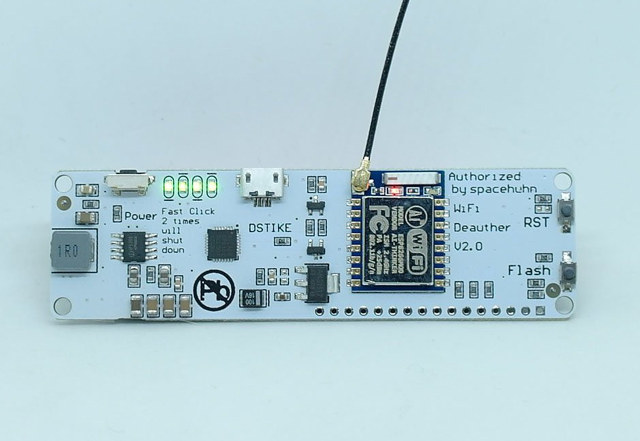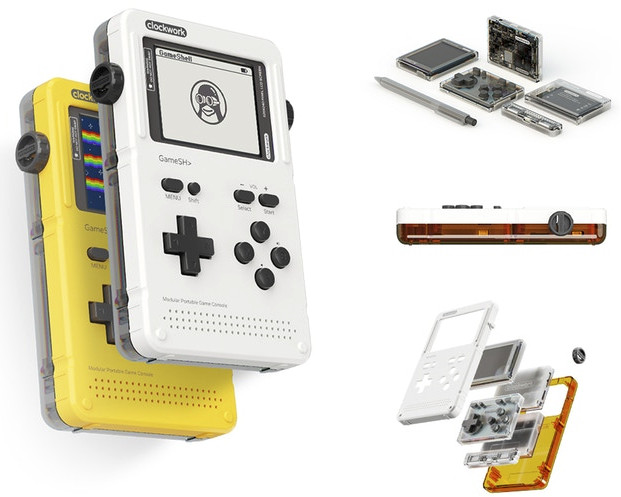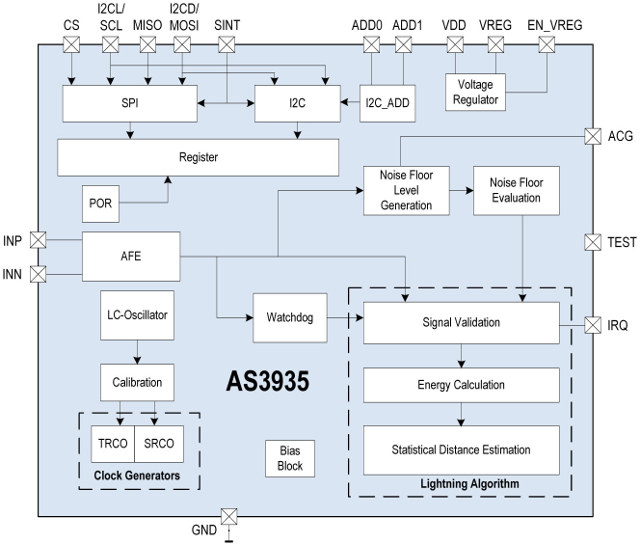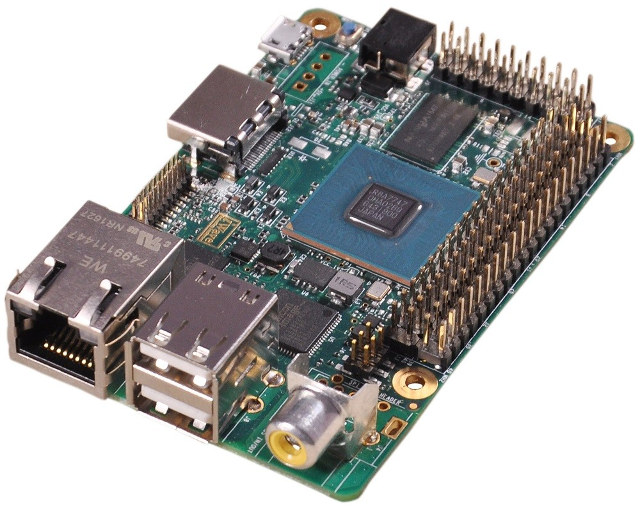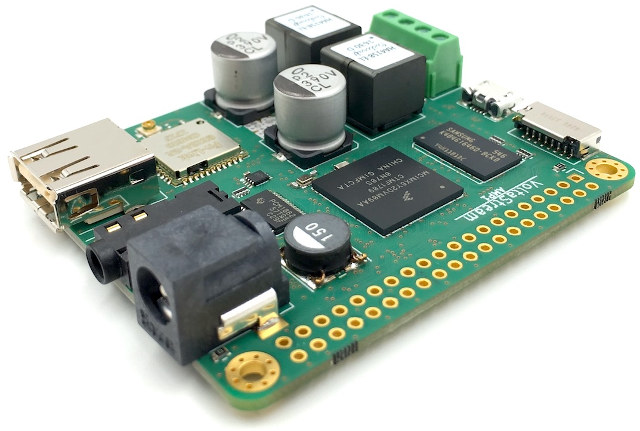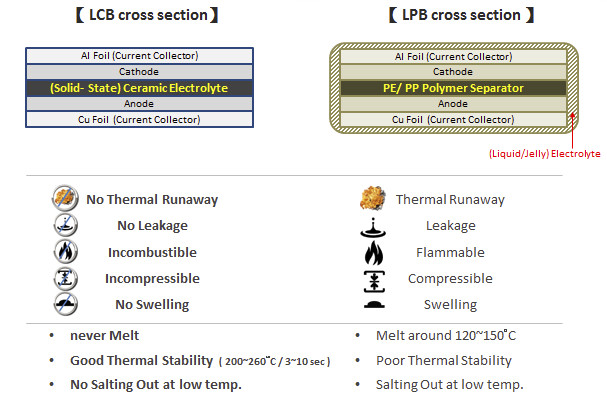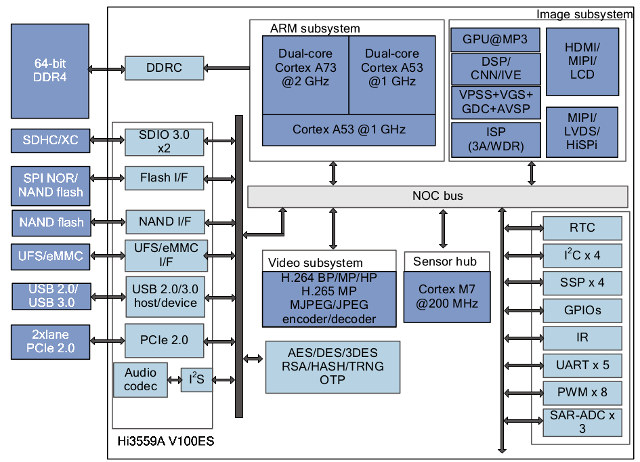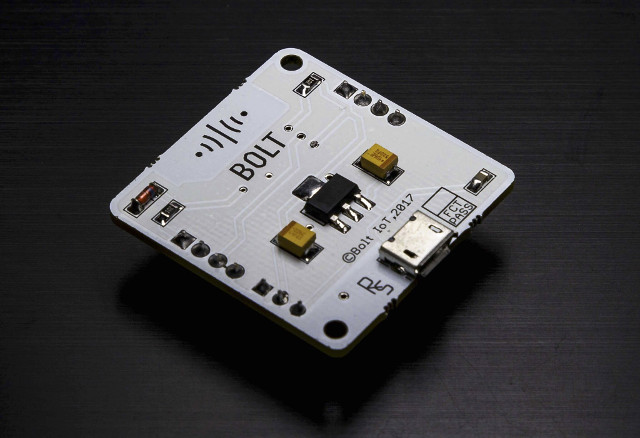Most technological advances usually improve life of people, and with the costs coming down dramatically over the years, available to more people. But technology can be used for bad, for example by governments and some hackers. Today, I’ve come across two cheap hardware devices that could be considered evil. The first one is actually pretty harmless and can be use for education, but disconnects you from your WiFi, which may bring severe physiological trauma to some people, but should not be life threatening, while the other is downright scary with cheap targeted killing machines. WiFi Deauther V2.0 board Specifications for this naughty little board: Wireless Module based on ESP8266 WiSoC USB – 1x Micro USB type changed, more stable. Expansion – 17-pin header with 1x ADC, 10x GPIOs, power pins Misc – 1x power switch, battery status LEDs Power Supply 5 to 12V via micro USB port Support for 18650 […]
Gameshell Portable Retro Gaming Console Features Clockwork Pi Allwinner R16 Board (Crowdfunding)
Allwinner R16 with its lowly four Cortex A7 cores and Mali-400MP2 GPU would not normally come to mind when designing a gaming console. But Nintendo used the R16 processor twice in their retro gaming consoles: NES Classic and SNES Classic Edition. Clockwork, a startup based in Hangzhou, China, decided they could also do gaming console with the processor: Gameshell. But their product is quite different, as it’s both a portable console with 2.7″ display, and a development platform with the console based on Clockwork Pi development board, and an Atmel AVR (Arduino) based keypad board. Gameshell specifications: Clockwork Pi development board SoC – Alwinner R16-J quad core Cortex A7 processor @ 1.2 GHz with Mali-400MP2 GPU System Memory – 512MB or 1GB (in future revision of the board) Storage – 1x micro SDHC slot Video Output / Display I/F – 18-bit RGB display interface, micro HDMI (planned in revision of […]
Detect Lightning with Those AMS AS3935 “Thunder” Boards
Launched in 2012, AMS AS3935 Franklin lightning sensor is – at its name implies – a lightning sensing IC. The chip was designed for low power, portable or fixed wire-line applications, and beside detecting electrical emissions from lightning activity, it can also provide an estimation of the distance to the head of the storm from 40km away down to 1km, while filtering out other signals from motors, microwave ovens, etc… The chip interfaces via SPI or I2C to the host processor / micro-controller, and comes in a small MLPW-16 (4x4mm) package. Price is $3.55 per unit for 1k orders. Applications include wearables, golf carts, pool safety, portable GPS, bike computers, weather stations, uninterruptible power supplies, smart grid systems, environmental monitoring systems, etc… Basically, AS3935 can be used either for weather monitoring, or safety applications. I’ve found two maker boards with the chip: MikroElectronika Thunder Click board compatible with MikroBUS socket […]
Compact Renesas RZ/G1C based ARM Linux Single Board Computer Exposes 100 Expansion Pins
iWave Systems has released a new business card sized single board computer (SBC) with iW-RainboW-G23S, which looks somewhat similar to a Raspberry Pi 3 board, but is equipped with Renesas RZ/G1C single or dual core ARM Cortex A7 processor, up to 2GB RAM, Gigabit Ethernet, and provides plenty of I/Os through 3 headers for a total of 100 pins. Target applications include HMI & access control, industrial control, healthcare devices, point of sale, IoT, home & office automation, and white goods & appliances. iW-RainboW-G23S board specifications: SoC – Renesas RZ/G1C Dual/Solo ARM Cortex-A7 processor @ 1.0 GHz with PowerVR SGX531 3D GPU System Memory – 512 MB DDR3 (expandable up to 2GB) Storage – 2MB SPI Flash (expandable), 8GB eMMC Flash (expandable), and micro SD connector Video Output/Input – 1x HDMI output port, 1x CVBS input RCA jack, optional 1x CVBS output RCA jack/header Video – HD encode/decode Connectivity – 100/1000Mbps […]
VoltaStream AMP1 Linux Audio Board Includes a Stereo Audio Amplifier, Adds WiFi and Bluetooth
Last summer I wrote about VoltaStream ZERO an audio board powered by NXP i.MX6ULL processor, with up to 1GB RAM, a Texas Instruments DAC, and leveraging Raspberry Pi Zero form factor. The board runs a custom Linux distribution called PolyOS built with the Yocto Project, and including shairport-sync, librespot, SqueezeLite, a DLNA renderer, and more. Polyvection, the company behind the project is now back with VoltaStream AMP1 audio development board, with half the board very similar to VoltStream ZERO, and the other half featuring an audio amplifier, and a wireless module for WiFi and Bluetooth. VoltaStream AMP1 board specifications: SoC – NXP i.MX6ULL ARM Cortex-A7 processor @ 996 MHz System Memory – 512 MB DDR3 Storage – micro SD card slot Audio 1x I2S for integrated DAC and AMP, 1x I2S for GPIO access, 1x TOSLINK-IN jack Analog DAC – Texas Instruments PCM1862 (SNR 103 dB) Amplifier – ISSI IS31AP2121 […]
Prologium Lithium Ceramic Solid State Batteries Don’t Catch Fire, Nor Explode
You must have read articles or watch videos showing laptop or smartphone battery explode, and Lithium-ion batteries are considered hazardous enough that they are banned from airplane without the proper paper work. Such batteries can catch fire or even exploded when overcharged, or physically damaged. We have protection circuits for the former, and physical damage seldom happens, so in most cases the batteries are safe, and that’s why they are still used in laptops and phones. However, if you need maximum safety, Lithium ceramic battery (LCB) may be the way to go. Those are still Lithium-ion battery cells, but they replace the liquid polymer separator found in Li polymer battery (LPB) by a solid-state ceramic electrolyte, and you can mistreat them almost as much as you like with overcharge, cut them, bend them, and they won’t catch fire, nor explode. One company that makes such batteries is Taiwan based Prologium […]
Hisilicon Hi3559A V100ES is an 8K Camera SoC with a Neural Network Accelerator
Earlier today, I published a review of JeVois-A33 machine vision camera, noting that processing is handled by the four Cortex A7 cores of Allwinner A33 processor, but in the future we can expect such type of camera to support acceleration with OpenCL/Vulkan capable GPUs, or better, Neural network accelerators (NNA) such Imagination Tech PowerVR Series 2NX. HiSilicon already launched Kirin 970 SoC with such similarIP, except they call it an NPU (Neural-network Processing Unit). However, while looking for camera SoC with NNA, I found a list of deep learning processors, including the ones that go into powerful servers and autonomous vehicles, that also included a 8K Camera SoC with a dual core CNN (Convolutional Neural Network) acceleration engine made by Hisilicon: Hi3559A V100ES. Hisilicon Hi3559A V100ES specifications: Processor Cores 2x ARM Cortex A73 @ 2 GHz, 32 KB I cache, 64KB D cache or 512 KB L2 cache 2x ARM […]
Bolt IoT Platform Combines ESP8266, Mobile Apps, Cloud, and Machine Learning (Crowdfunding)
There are plenty of hardware to implemented IoT projects now, but in many cases a full integration to get data from sensors to the cloud requires going though a long list of instructions. Bolt IoT, an Indian and US based startup, has taken up the task to simplify IoT projects with their IoT platform comprised of ESP8266 Bolt WiFi module, a cloud service with machine learning capabilities, and mobile apps for Android and iOS. Bolt IoT module hardware specifications: Wireless Module – A.I Thinker ESP12 module based on ESP8266 WiSoC Connectivity – 802.11 b/g/n WiFi secured by WPA2 USB – 1x micro USB for power and programming Expansion – 4-pin female header and 7-pin female header with 5 digital I/Os, 1x analog I/O, and UART Misc – Cloud connection LED The hardware is not the most interesting part of Bolt IoT, since it offers similar functionalities as other ESP8266 boards. […]


